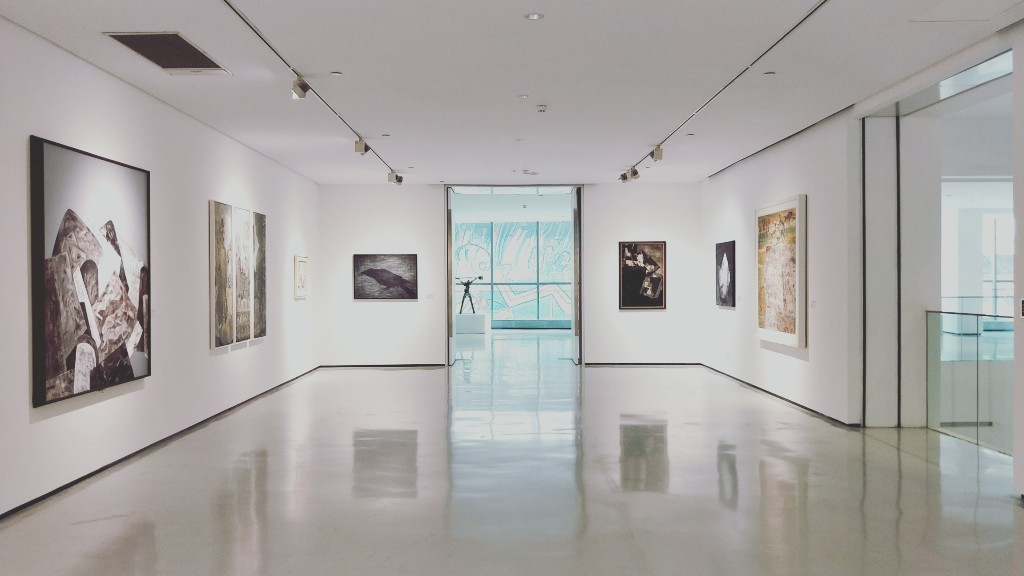Virtual technologies, like the metaverse, enhance in-person experience at museums
UOC researchers analyse the relationship between real spaces and virtual objects, and their impact on visitors' cognitive processesThe study compares different levels of technological mediation in visits to Barcelona's CaixaForum

Immersing ourselves in a painting or exploring beyond museums' objects and physical spaces is a rising trend in the world of museums. Barcelona is welcoming various immersive exhibitions, for instance at the Centre d’Arts Digital (IDEAL) featuring Frida Khalo, or at CaixaForum there is the Homo ludens exhibition, combining video games and works of art, and Symphony, a virtual journey to the heart of music. That's why a group of researchers from the Universitat Oberta de Catalunya (UOC) is studying the different models of relationship between real spaces and virtual objects, and their effects upon visitors' cognitive processes.
"Our work aims to perform a comparison between a real and a virtual visit using both augmented reality with virtual agents in different locations and virtual reality and 360° video," said Pierre Bourdin, a researcher and member of the UOC's Faculty of Computer Science, Multimedia and Telecommunications and leader of this project.
Extended reality is a term encompassing the use of different immersive technologies capable of displaying real and virtual elements with different degrees of integration. These kinds of technologies can be used to take a tour of the same spaces with a VR headset, which means they can be carried out from anywhere in the world.
"The UOC has been carrying out research in this field for some time now but, because of the growth in the metaverse, interest has increased and led to projects dealing with virtual and augmented reality, and their application in areas such as culture, social and health care, digital health or education," said Bourdin.
A real-life visit enhanced by virtual technology
This work involves the use of both augmented and virtual reality systems, as well as other audiovisual features such as 360° videos. All of this has been combined with the goal of providing users with a more rounded experience in both their real-life and their virtual visits, and of comparing the effects of each on the visitor experience. "These kinds of technologies are designed to view and interact with computer-generated objects that are superimposed over the real world, and this allows us to analyse certain cognitive processes and behaviours in visitors," said Álvaro Pastor, a UOC course instructor, who is carrying out research in this area for his doctoral thesis project, which is supervised by Bourdin as part of the doctoral programme in Network and Information Technologies.
The researchers have implemented their own systems and models designed expressly for this project. "We're employing both virtual and augmented reality in this study. They have been developed specifically by us for this project, and are suited to both capturing reality in 360° video and recreating it afterwards with a headset," said Pastor. He added that they were also using an augmented reality app for the on-site tour.
"The experiments are being carried out thanks to the collaboration of volunteers willing to participate in individual sessions every Saturday until the end of April at Barcelona's CaixaForum," they said. People can sign up to volunteer here (in Spanish).
"Volunteers will be able to visit the museum building using either augmented or virtual reality, depending upon what they are assigned, with the goal of assessing their perceptions and certain cognitive processes," explained Pastor, whose work is receiving funding for experimental and innovation projects from Barcelona's Culture Institute.
Augmented reality has, in recent years, been included in the arsenal of a number of museums with the aim of adding virtual content to real-world objects. For example, it allows visitors to obtain more information when going to an exhibition or to benefit from expert knowledge.
This UOC research supports Sustainable Development Goals (SDGs) 4, Quality Education, and 9, Industry, Innovation and Infrastructure.
UOC R&I
The UOC's research and innovation (R&I) is helping overcome pressing challenges faced by global societies in the 21st century, by studying interactions between technology and human & social sciences with a specific focus on the network society, e-learning and e-health.
Over 500 researchers and 52 research groups work among the University's seven faculties and two research centres: the Internet Interdisciplinary Institute (IN3) and the eHealth Center (eHC).
The University also cultivates online learning innovations at its eLearning Innovation Center (eLinC), as well as UOC community entrepreneurship and knowledge transfer via the Hubbik platform.
The United Nations' 2030 Agenda for Sustainable Development and open knowledge serve as strategic pillars for the UOC's teaching, research and innovation. More information: research.uoc.edu #UOC25years
Experts UOC
Press contact
-
Editorial department
